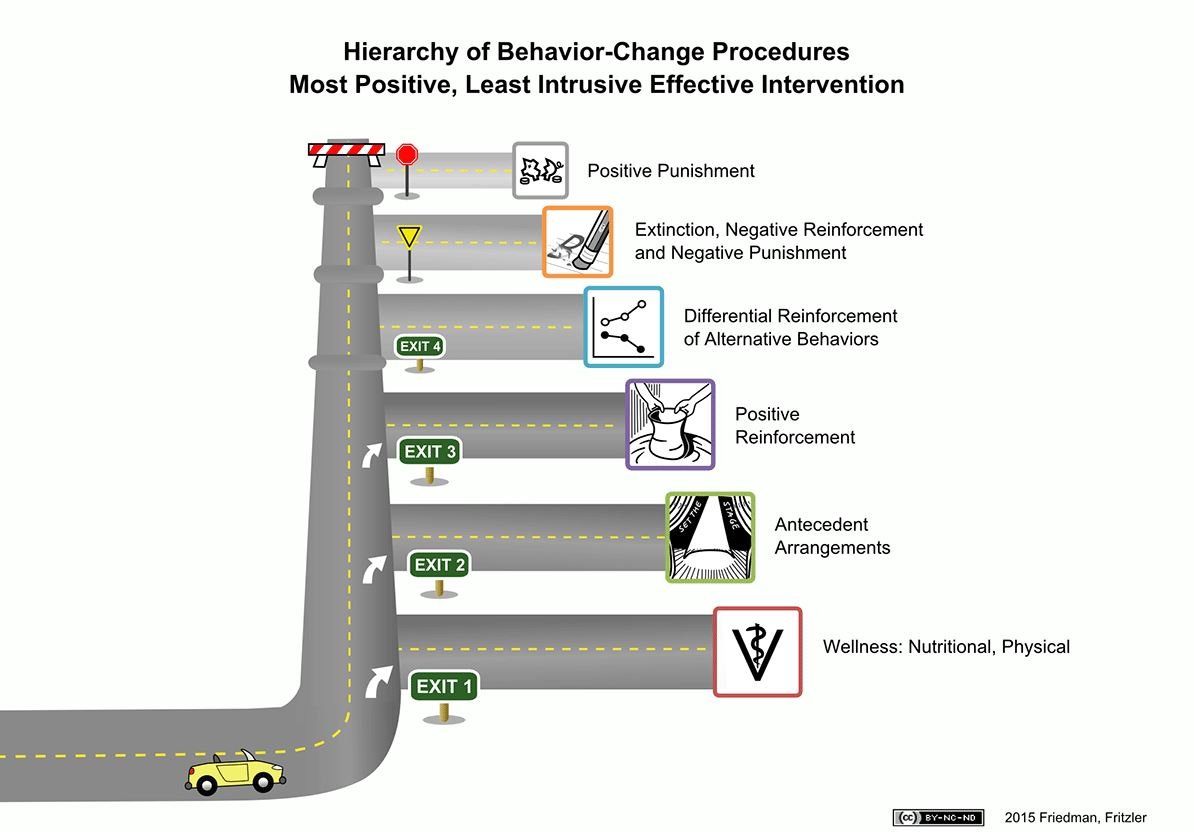Hierarchy of Procedures for Humane and Effective Practice
Purpose
The Humane Hierarchy serves to guide professionals in their decision-making process during training and behavior modification. Additionally, it assists owners and animal care professionals in understanding the standard of care to be applied in determining training practices and methodologies and the order of implementation for applying those training practices and methodologies.
Hierarchy of Procedures for Humane and Effective Practice
Health, nutritional, and physical factors: Ensure that any indicators for possible medical, nutritional, or health factors are addressed by a licensed veterinarian. The consultant should also address potential factors in the physical environment.
Antecedents: Redesign setting events, change motivations, and add or remove discriminative stimuli (cues) for the problem behavior.
Positive Reinforcement: Employ approaches that contingently deliver a consequence to increase the probability that the desired behavior will occur.
Differential Reinforcement of Alternative Behavior: Reinforce an acceptable replacement behavior and remove the maintaining reinforcer for the problem behavior.
Negative Punishment, Negative Reinforcement, or Extinction (these are not listed in any order of preference):
Negative Punishment - Contingently withdraw a positive reinforcer to reduce the probability that the problem behavior will occur.
Negative Reinforcement - Contingently withdraw an aversive antecedent stimulus to increase the probability that the right behavior will occur.
Extinction - Permanently remove the maintaining reinforcer to suppress the behavior or reduce it to baseline levels.
Positive Punishment: Contingently deliver an aversive consequence to reduce the probability that the problem behavior will occur.
Article and image credit: International Association of Animal Behavior Consultants (IAABC)

